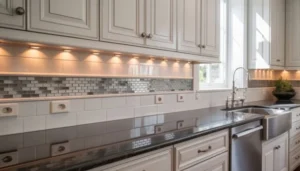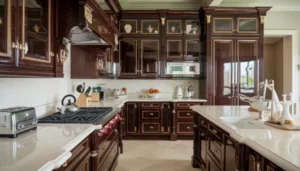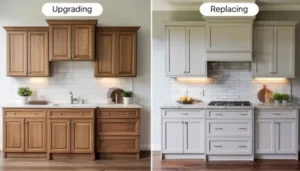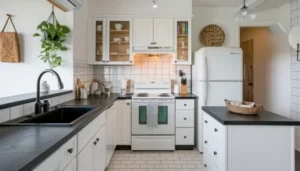If you’re looking to update your bathroom, one of the most popular upgrades is a tub to shower conversion. This change can transform your space into something more functional, modern, and accessible. Whether you’re interested in maximizing your bathroom’s space, improving its aesthetic, or adding convenience for mobility challenges, converting your bathtub into a shower offers multiple benefits. In this guide, we’ll cover everything you need to know about a bath to shower conversion, from planning to execution, and help you decide if this upgrade is right for you.
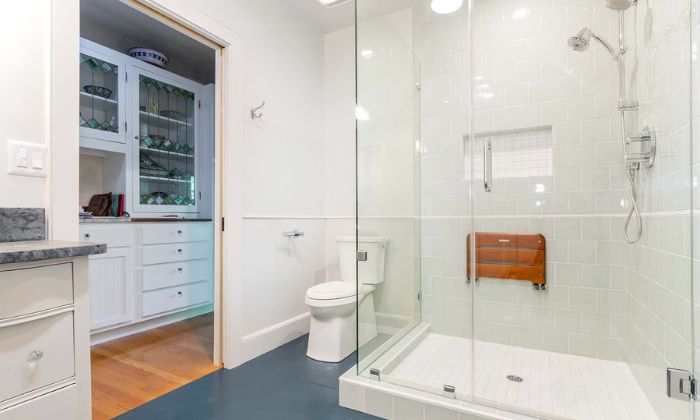
Benefits of Converting a Tub to a Shower
Maximizing Space
One of the primary reasons for opting for a tub to shower remodel is the opportunity to maximize space. Showers typically take up less room than bathtubs, allowing you to create a more open and functional bathroom. This is especially helpful in smaller bathrooms where every inch counts. Removing the tub and replacing it with a sleek shower design can make your space feel larger and more breathable. Additionally, a walk-in shower without a door or with frameless glass doors can further enhance the sense of openness. Consulting a professional Bathroom Remodeler can help you design a space that fully utilizes your bathroom’s potential.
Accessibility
For those with mobility issues or elderly family members, a bathtub to shower conversion can be a game-changer. Showers are much easier to step into than bathtubs, reducing the risk of slipping or falling. Shower walls and shower pans can be designed with low or no curbs, allowing for a curb-less shower that’s wheelchair-friendly or easily accessible for individuals with limited mobility. This accessibility can dramatically improve quality of life and make the bathroom safer for all.
Modern Look
Updating a bathroom can significantly improve its aesthetic appeal, and a tub to shower conversion plays a big role in that transformation. Modern shower designs including sleek glass doors, tiles, and stylish fixtures can turn your bathroom into a spa-like retreat. Whether you prefer a minimalist style or a more luxurious setup, converting your tub to a shower offers a streamlined and contemporary look that fits a wide variety of bathroom styles.
Increase Home Value
Another major benefit of converting a bathtub to a shower is the potential to increase your home’s value. Many homebuyers prefer showers to tubs, especially in the master bath. A well-executed bathroom remodel that includes a bathtub to shower conversion can make your home more attractive to prospective buyers. The modern, high-quality finishes that come with a shower remodel can be a significant selling point, especially if you opt for top-tier materials like tiles, glass doors, and sleek shower fixtures.
Planning the Conversion
Before you dive into the tub to shower conversion process, there are a few important things to consider.
Assessing the Bathroom Layout
The first step is evaluating your bathroom’s layout. Consider the current placement of your tub, shower, and any surrounding fixtures. Plumbing adjustments will likely be necessary, as the water pipes will need to be rerouted to accommodate the shower. Ensure that the space is suitable for the type of shower type you envision, whether it’s a walk-in shower or a more traditional, enclosed option.
Budget Considerations
The cost of a tub to shower conversion varies depending on several factors. On average, you can expect to pay between $1,000 to $10,000, depending on the materials and labor costs. The size of your bathroom and the complexity of the project will also influence the price. Materials like tiles, glass walls, and shower pans will contribute to the overall cost. When setting your budget, consider both the average costs of materials and labor, as well as the cost range of different finishes and styles.
Material Selection
Choosing the right materials is crucial to both the look and function of your new shower. High-quality shower walls and shower pans are essential for durability and water resistance. Tiles are a popular choice for the flooring and walls, as they are versatile and come in a variety of colors and textures. Glass doors can add an elegant touch, and if you’re going for a more luxurious feel, consider adding niche storage or a rainfall showerhead for added relaxation.
Hiring a Professional vs. DIY
Another important decision is whether to hire a professional or tackle the conversion as a DIY project. If you’re skilled in plumbing and construction, you might be able to handle the bathroom renovation yourself. However, keep in mind that plumbing adjustments and proper waterproofing are key to the success of your project. A professional will ensure everything is done to code and may help avoid future water damage. Hiring a professional also saves you time and effort, although it does increase the overall cost. On the other hand, a DIY project could save money but might take longer and present challenges that require specialized knowledge.
Step-By-Step Conversion Process
Preparing the Space
The first step in the conversion process is demolition and cleanup. You will need to remove the existing tub and any surrounding fixtures, including the old plumbing if necessary. This is also the time to assess the space for any repairs, such as fixing water damage or replacing outdated pipes.
Plumbing Adjustments
Next, you’ll need to relocate or update the plumbing to accommodate your new shower. This may include moving the showerhead, installing a new drain, and ensuring that water lines are properly routed to the shower. Plumbing adjustments can be complex, and this is one area where hiring a professional might be necessary.
Installing the Shower Base
Once the plumbing is in place, the next step is installing the shower base, also known as the shower pan. There are several options to choose from, including traditional prefabricated bases or custom-built ones. Tiled shower pans offer more design flexibility but require more time to install. On the other hand, prefabricated options can be quicker and easier but might limit your design choices.
Building the Enclosure
The next phase involves building the shower enclosure. You can opt for a completely tiled shower, glass doors, or a combination of both. Glass shower doors are popular for creating a clean, modern look, but ensure that the enclosure is properly sealed to prevent leaks.
Finishing Touches
The final step is adding finishing touches like fixtures, lighting, and accessories. Install your showerhead, controls, and any additional features like a rainfall showerhead or bench seating. This is also the time to add any decorative elements like tiles, lighting, and storage options to make the shower not just functional but also aesthetically pleasing.
Tub to Shower Conversion Ideas
Here are some creative ideas to inspire your tub to shower conversion:
Walk-In Shower with Frameless Glass Doors
A walk-in shower with frameless glass doors offers a sleek, contemporary look that enhances any bathroom. The frameless design creates a seamless, open appearance, making the space feel larger and more airy. Without visible hardware or framing, the glass walls provide an unobstructed view, adding to the clean and minimalist aesthetic. This style is not only visually appealing but also easy to maintain, as it eliminates the crevices where dirt and grime can accumulate. Ideal for modern bathrooms, a walk-in shower with frameless glass doors combines luxury, functionality, and an open, spacious atmosphere.
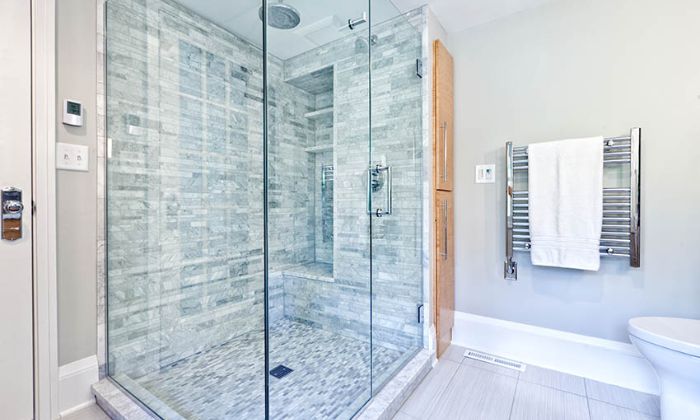
Curb-less Shower
A curb-less shower is designed without a raised threshold or curb, providing seamless entry into the shower space. This feature makes it ideal for individuals with mobility challenges, such as the elderly or those using wheelchairs, as it eliminates the need to step over a barrier. Curb-less showers often have a sloped floor to direct water toward the drain, ensuring water stays contained within the shower area. This design creates a modern, sleek look while improving accessibility, making it a popular choice for both bathrooms in need of universal design and those seeking a minimalist aesthetic.
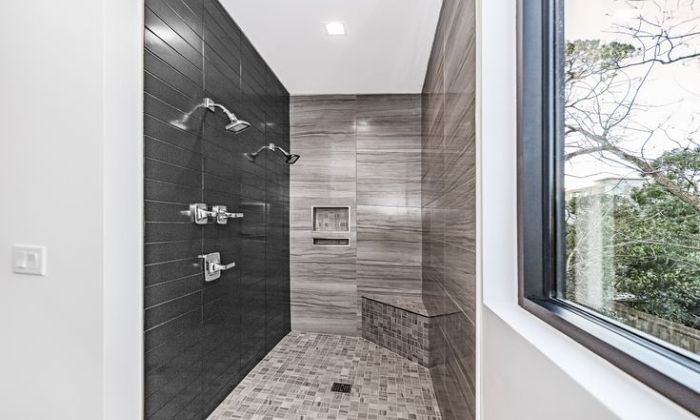
Tiled Shower with Niche Storage
A tiled shower with niche storage combines style and practicality by incorporating built-in shelves or alcoves into the shower wall. These niches offer convenient, easily accessible storage for toiletries like shampoo, soap, and razors, helping to keep the shower area organized and free of clutter. The tiles can be chosen to match the overall bathroom design, adding an aesthetic appeal. The niche storage is typically recessed into the wall, maintaining a sleek and modern look while maximizing space. This design not only improves functionality but also enhances the visual appeal of the shower area.
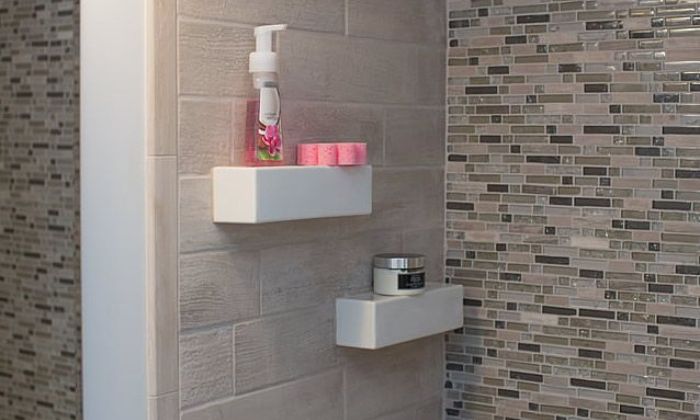
Corner Shower
Corner showers are a great solution for small bathrooms, offering an efficient use of space. They are designed to fit snugly into a corner, making them perfect for tight areas where a traditional shower or bathtub may not fit. These showers typically feature two walls and an open side, often with glass panels or doors to enclose the area. Corner showers come in various styles, including square, rectangular, and curved, and can be customized with different fixtures and finishes. Their compact design allows for maximum functionality while saving space, making them a popular choice for smaller bathrooms.
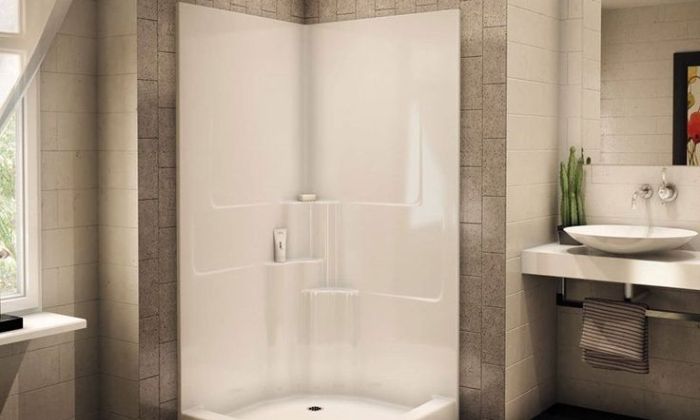
Rainfall Showerhead with Bench Seating
A rainfall showerhead paired with bench seating creates a luxurious, spa-like atmosphere in your bathroom. The gentle, wide stream of water from the rainfall showerhead mimics natural rainfall, offering a soothing and immersive shower experience. Adding a bench provides a relaxing spot to sit, whether for unwinding or to enjoy a more comfortable shower routine. Together, these features transform an ordinary bathroom into a calming retreat, enhancing both comfort and style. Ideal for those who appreciate both functionality and relaxation, this combination provides a perfect balance of luxury and practicality.
Cost of Tub-to-Shower Conversion
Average Price Range
The cost of a bathtub to shower conversion can range from $1,000 to $10,000 or more, depending on the design, materials, and labor involved. The average costs will include both materials and labor, with high-quality options like shower walls, tiles, and custom glass doors pushing the price higher.
Factors Influencing Costs
The size of the bathroom, the materials you choose, and whether you’re doing the work yourself or hiring a professional all impact the cost range. For example, choosing custom tiles or a rainfall showerhead can increase the price, while opting for prefabricated parts can help you save money.
Cost-Saving Tips
If you’re looking to save money, consider repurposing some existing materials. For example, you may be able to reuse your old shower pan if it’s still in good condition, or choose bath fitter products that offer a more budget-friendly alternative to custom designs. Doing some of the work yourself, like demolition or painting, can also help reduce costs. Additionally, if you’re planning a kitchen remodel, consider the 12×12 kitchen remodel cost, as smaller projects often have more affordable pricing. Adjusting the scope of your renovation or opting for cost-effective materials can keep your budget in check.
Maintenance and Care for the New Shower
After your tub-to-shower conversion, regular maintenance is key to preserving its condition. Clean the bathroom shower frequently using non-abrasive cleaners to prevent soap scum buildup, and consider installing a water softener to minimize residue. To avoid mold and mildew, ensure proper ventilation and keep the shower dry, while inspecting grout and sealant for potential leaks. Additionally, maintain the shower fixtures by regularly cleaning them and checking for leaks, which will help prolong the life of your shower pan, glass doors, and showerhead. These simple steps ensure your shower stays in top condition for years to come.
Is a Tub-to-Shower Conversion Right for You?
If you’re ready to maximize space, improve accessibility, and give your bathroom a fresh, modern look, a tub to shower conversion could be the perfect option for you. It can increase your home’s value, make your bathroom more functional, and enhance your overall bathroom experience.
Best Tub to Shower Conversion Company in San Diego
If you’re considering a bathroom remodel, a tub-to-shower conversion could be the perfect solution. It’s an excellent way to improve the functionality, accessibility, and aesthetics of your bathroom. Whether you’re looking to increase home value, create a more open space, or make your bathroom more accessible, converting your tub to a shower is a smart investment.
If you live in San Diego and are looking for a reliable and experienced company for your conversion project, Poseidon Remodeling is the best choice. We specialize in high-quality tub-to-shower conversions that are tailored to your specific needs. Our team of experts will guide you through every step of the process, ensuring a seamless and successful conversion.
Conclusion
A tub-to-shower conversion offers numerous benefits, from maximizing space to improving accessibility. With careful planning, the right material choices, and professional installation, you can transform your bathroom into a modern, functional, and stylish space. Whether you choose to hire a professional or tackle the project yourself, understanding the process and costs involved will help you make the best decision. If you’re ready to convert your tub into a beautiful shower, Poseidon Remodeling is here to help make your vision a reality.



